Science Daily News | 20 May 2023

Views (211)
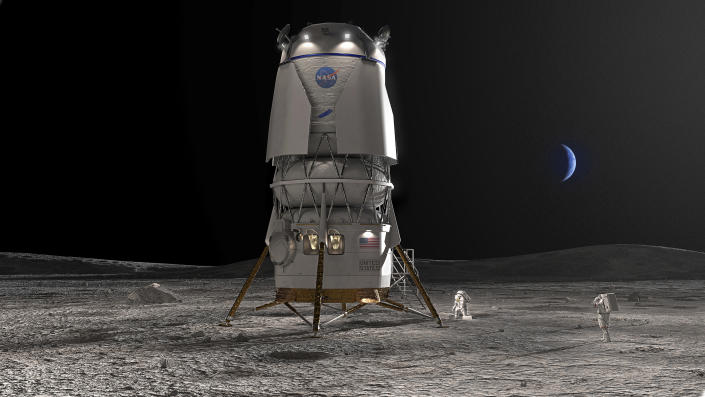
Head of Spaceport Cornwall leaves role
Melissa Quinn has been part of the Spaceport project since it started in 2014, and became its head in 2021.
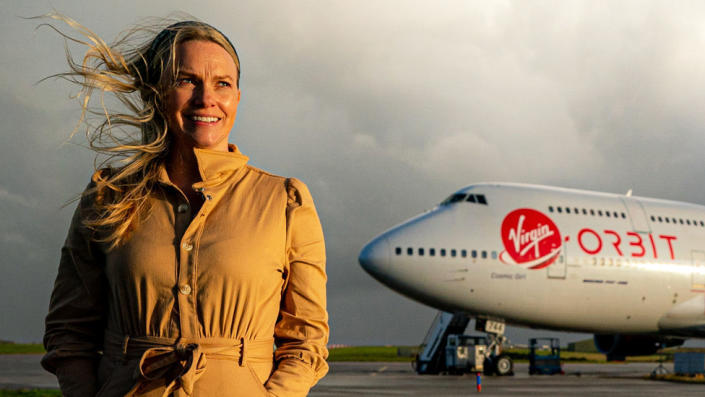
The head of Spaceport Cornwall is leaving her role at the end of the month, Cornwall Council has said.
Melissa Quinn has been part of the Spaceport project since it started in 2014, and became its head in 2021.
She said: "I am leaving... at the start of an exciting new chapter, and I will be cheering it on from the side lines."
Cornwall Council said: "Despite the satellites not reaching their final orbit, the Spaceport and Cornwall Airport Newquay teams flawlessly executed ground operations, justifying their achievement of being awarded the UK's first spaceport license.
"Melissa has championed Cornwall on a global stage and helped developed partnerships locally in order to accelerate the growth of Cornwall's space sector."
Ms Quinn, originally from British Columbia in Canada, said: "I am incredibly proud of what my small, dedicated team, and I have achieved. Mostly, I am proud of our work with local young people, especially girls, inspiring them to get into STEAM careers.
"I want to say thank you to my team and our partners for helping to deliver our purpose of Space for Good, putting Cornwall on the world's stage."
Louis Gardner, Cornwall Council's Portfolio Holder for the Economy said: "I would like to thank Melissa personally for her dedication and leadership in making Spaceport Cornwall a reality - and in particular the way in which her work has inspired thousands of young people to understand that an amazing career in space is something they can achieve right here in Cornwall."
Man sentenced for poisoning protected wild birds
Some of the birds killed by Barry Nicolle ended up in the grounds of a nearby primary school.

A 67-year-old waterfowl enthusiast has been sentenced for killing multiple birds of prey and other birds.
Barry Nicolle, who runs a wildfowl breeding farm, admitted the indiscriminate use of banned poisons at Dumfries Sheriff Court.
It is believed to be the first conviction in which multiple birds of prey have been killed with poison.
Nicolle was given a community payback order and ordered to carry out 216 hours of unpaid work.
He also pled guilty to possession of several highly toxic pesticides, using a crow trap illegally and an air weapon licensing offence.
Between May 2019 and February 2020 Nicolle laced bait with banned pesticides at sites in Springholm and Kirkpatrick Durham in Dumfries and Galloway.
He also placed poisoned bread on fence posts around his land which is about 150m (164 yards) from Springholm Primary School.
It was done to attract and kill scavengers in a bid to protect his own collection of exotic and ornamental waterfowl from a perceived threat.
Speaking after the sentencing, Fiona Caldwell, of the Crown Office and Procurator Fiscal Service (COPFS), said: "Barry Nicolle's actions led to the illegal killing of multiple red kites and rooks.
"The laying of bait laced with poisons was shockingly irresponsible and Nicolle has shown an utter disregard for the wildlife laws which serve to protect these species."
The court heard that numerous reports of suspicious deaths of red kites in the Kirkpatrick Durham and Springholm areas were made to Police Scotland, RSPB and Scottish SPCA inspectors by members of the public.
Several red kite were found lying motionless on the ground in a distressed state and had to be euthanised.
Ten poisoned rooks were discovered on the grounds of Springholm Primary School.
Ian Thomson, RSPB Scotland's head of investigations, said: "The placing of poison baits out in the open is illegal, dangerous and indiscriminate.
"It is exceedingly fortunate that Nicolle's repeated actions did not result in serious injury to a young child."
Det Insp Dean Little added: "Scotland's wildlife is one of its greatest attractions, which is especially true in our local area.
"Nicolle's reckless use of illegal poison was not only selfish and damaging to the birds it killed, but also posed a risk to the environment and members of the public who came across them."
Wildfires rip across Canada as heat wave smashes temperature records
High temperature records fell by the dozen this week as western Canada continued to suffer in a prolonged, scorching heat wave.

High temperature records fell by the dozen this week as western Canada continued to suffer in a prolonged, scorching heat wave.
“This is a very unusual pattern. We often don’t see these types of patterns set up this early in the year. We see these patterns in the summer,” said Terri Lang, a warning preparedness meteorologist for Environment and Climate Change Canada.
It can take months for scientists to determine whether a particular weather anomaly is the result of climate change and the heating of the atmosphere by the burning of fossil fuels. But Lang said the events fit with what climate scientists have predicted for western Canada.
“It is consistent with what the science of climate change is telling us — that the climate’s warming, that temperatures are getting warmer and drier early on in the year and that warming temperatures lead to more forest fires,” she said.
The “omega block” pattern was established in late April and early May, Lang said. The pattern — a massive block of high pressure that resembles the Greek letter it is named for — has continued to sit over the region for weeks, sending temperatures soaring into record-breaking territory in early May.
Daily temperature records have been broken with regularity in Alberta and other provinces since the beginning of the month.
“Last weekend was definitely anomalous, especially for May,” said Kayla Mazurkiewicz, a meteorologist at the National Weather Service in Seattle, who noted that the high pressure system has remained centered over western Canada. “That pattern was directly over that area. That’s why they’ve gotten the brunt of it.”
Nathan Gillett, a research scientist with Environment and Climate Change Canada who contributed to that research, said what’s happening this month is an “extreme event” but less so in comparison to 2021. Gillett said researchers were considering a new, detailed climate attribution study of the recent heat wave.
“The risk of these kinds of heat waves everywhere has been induced by human-caused climate change,” Gillett said.
The wildfires could affect global energy prices. Wildfires forced some Canadian shale operators to halt work this month, according to Rystad Energy, an independent energy research firm. Rystad estimated that at least 240,000 barrels of oil could not be pumped each day because of outages. Production of 2.7 million barrels of oil each day is within areas in “very high” or “extreme” wildfire danger rating zones, according to a special market update from company Vice President Thomas Liles.
The fires are causing air quality problems. In Calgary on Wednesday, the air quality was rated 10+, meaning it topped the risk scale used by Canadian authorities.
In the meantime, the heat was scrambling ecosystems in other areas of Canada. In British Columbia, the warmth prompted a rapid melt-out of mountain snow. That left officials dealing with flood and fire evacuations at the same time.
The weather is predicted to remain hot and dry in long-term forecasts, Lang and Gillett said.
“We don’t see an end in sight,” Lang said.
Amazon's Jeff Bezos to help Nasa return to Moon
The US space agency turns to a second billionaire to help put astronauts back on the lunar surface.
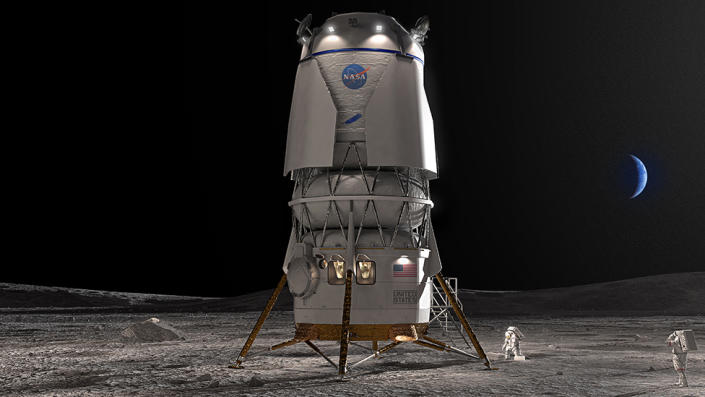
The US space agency has enlisted a second billionaire to help it put astronauts back on the Moon.
Nasa is already working with Elon Musk's SpaceX firm on a descent system based on its novel Starship rocket that will touch down as early as 2025.
It has now also awarded Amazon.com founder Jeff Bezos a contract to build a landing craft to take a crew down to the lunar surface later this decade.
His Blue Origin company will produce a more conventional-looking vehicle.
Mr Bezos will have assistance from some well established names in the American aerospace sector, including Lockheed Martin, Boeing, Draper and Astrobotic.
Blue Origin secured the contract in a competition with Dynetics and Northrop Grumman.
Mr Bezos's company, which is based in Kent in the US State of Washington, will receive just over $3.4bn (£2.7bn) from Nasa as part of the contract. And the firm will be spending "well north of $3.4bn" of its own money on the project.
"We go to the Moon, to learn, to live, to invent, to create all these things to be successful at the Moon, to go to Mars," said agency Administrator Bill Nelson.
"The great adventure of humankind pressing out into the cosmos is here. And this is a part of it."
It's now more than 50 years since astronauts last set foot on the Moon.
Nasa has laid out a roadmap to achieve a more sustained human presence on Earth's natural satellite the next time around.
The agency's Artemis programme envisions stays of weeks on the lunar surface rather than just days, as was the case in the 1960s and 70s.
SpaceX has been asked to put down two astronauts at the Moon's south pole in late 2025 or 2026, and then again in 2028. These are the Artemis III and Artemis IV missions.
Blue Origin's 16m-tall, 45-tonne vehicle is called "Blue Moon". It would do the job on Artemis V, which is set to occur no earlier than 2029.
"Before the first crew landing occurs, we will be landing an exact copy of that lander prior to that - one year prior. So, we will be testing out full lander systems and the full architecture prior to any astronauts entering the vehicle," explained John Couluris, Blue Origin's vice president for lunar transportation.
The lander could also be configured simply to deliver cargo to the lunar surface - a minimum of 20 tonnes, the executive added.
Blue Origin plans to use its own rocket, known as New Glenn, to get Blue Moon off Earth (although this launcher has yet to make a debut flight). The dimensions of the lander have been determined by the volume and mass parameters of the rocket, which has a 7m-wide payload bay.
Artemis I has already occurred, in November last year: An uncrewed test of the Nasa rocket and capsule that will take astronauts to the vicinity of the Moon. Artemis II is scheduled for next year and will see a crew of four do a simple loop around the Moon.
For all the crewed missions, the idea is for astronauts to transfer to dedicated landing craft that will be waiting for them in lunar orbit. They'd go down to the surface in these vehicles, complete their exploration and then come back up.
Towards the end of the decade, Nasa intends for the transfers to be carried out at a new space station above the Moon called Gateway.
SpaceX was awarded its contract in 2021. It wants to use a variant of its huge, next-generation Starship rocket system, which debuted four weeks ago.
The maiden flight was terminated after four minutes when the vehicle spun out of control. But SpaceX is already talking about a second outing this summer.
Starship's readiness is one of the key factors that will determine whether Nasa can keep its Artemis programme on track. Right now, many commentators consider a first crewed landing on the Moon in late 2025 to be a very ambitious target.
Kent waste centres face closure to save costs
Four tips could close, as Kent County Council says it faces bankruptcy without making savings.
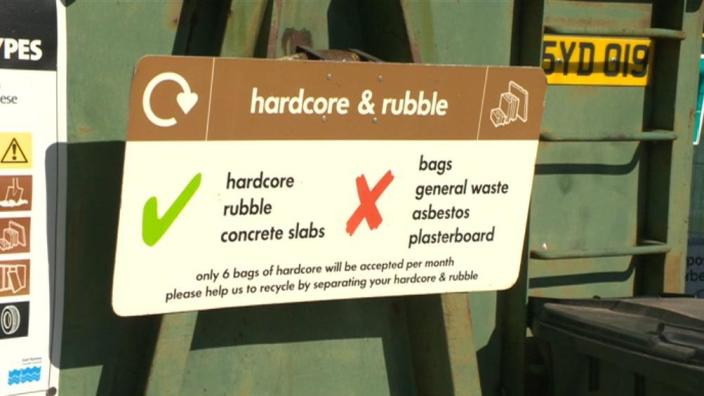
Four waste centres in Kent are facing closure as the county council seeks to save money.
Recycling centres in Dartford, Faversham, Maidstone and at Richborough near Sandwich would all shut permanently under one option.
Other plans include shutting three sites and reducing hours at 10 others, as part of £55m worth of savings.
The leader of Dartford Borough Council has started a petition to save the site in his district.
The council said the costs for its services has risen by £200m.
Susan Carey, Kent County Council's cabinet member for environment, said the savings have to be made to ensure the authority's financial survival.
She said: "If somebody's got a better way of making the savings, I'm very open to talking about that, but we really have to make those savings otherwise there won't be any services. We'll have gone bankrupt."
Dartford Borough Council leader Jeremy Kite has more than 1,300 signatures on his petition to keep the Dartford site open.
He said: "If this were to close, the people who use it would face a very long journey right across the borough to Gravesend.
"That's not very green, to put them on the roads. They're some of the most congested in the country."
The proposals are to be considered by the county council's environment and transport cabinet committee on 23 May.
NASA picks Bezos' Blue Origin to build lunar landers for moonwalkers
Jeff Bezos' rocket company has won a NASA contract to land astronauts on the moon, two years after it lost out to SpaceX. Blue Origin received a $3.4 billion contract Friday to lead a team to develop a lunar lander named Blue Moon. It will be used to transport astronauts to the lunar surface as early as 2029, following a pair of crew landings by Elon Musk’s SpaceX.
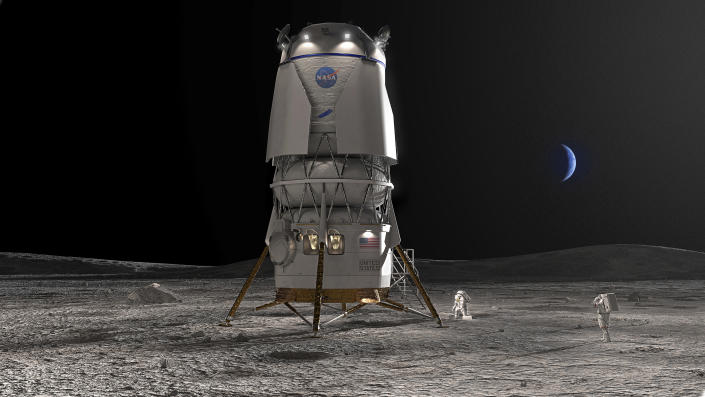
Blue Origin received a $3.4 billion contract Friday to lead a team to develop a lunar lander named Blue Moon. It will be used to transport astronauts to the lunar surface as early as 2029, following a pair of crew landings by Elon Musk’s SpaceX.
NASA will get astronauts to lunar orbit using its own rockets and capsules, but wants private companies to take over from there.
Blue Origin is kicking in billions of dollars, on top of the NASA contract, to help establish a permanent presence on the moon.
“We have a lot to do before we successfully land and return astronauts," said John Couluris, a Blue Origin vice president.
NASA’s Artemis program, which follows the 1960s and 1970s Apollo moonshots. kicked off with a successful test flight late last year. Launched atop NASA's new moon rocket, an empty Orion capsule went into lunar orbit before returning home.
Like SpaceX, Blue Origin plans to practice landing on the moon without a crew, before putting astronauts on board.
While the shiny, stainless steel Starship has a science fiction look, Blue Moon resembles more of a traditional capsule perched atop a tall compartment with legs. The latter will stand 52 feet (16 meters) on the moon.
Both companies' landers are meant to be reusable.
Blue Origin's team includes five partners: Lockheed Martin, Boeing, Draper, Astrobotic Technology and Honeybee Robotics.
Only one other bid was submitted for the contract competition, according to NASA.
___
The Associated Press Health and Science Department receives support from the Howard Hughes Medical Institute’s Science and Educational Media Group. The AP is solely responsible for all content.
0 Likes
